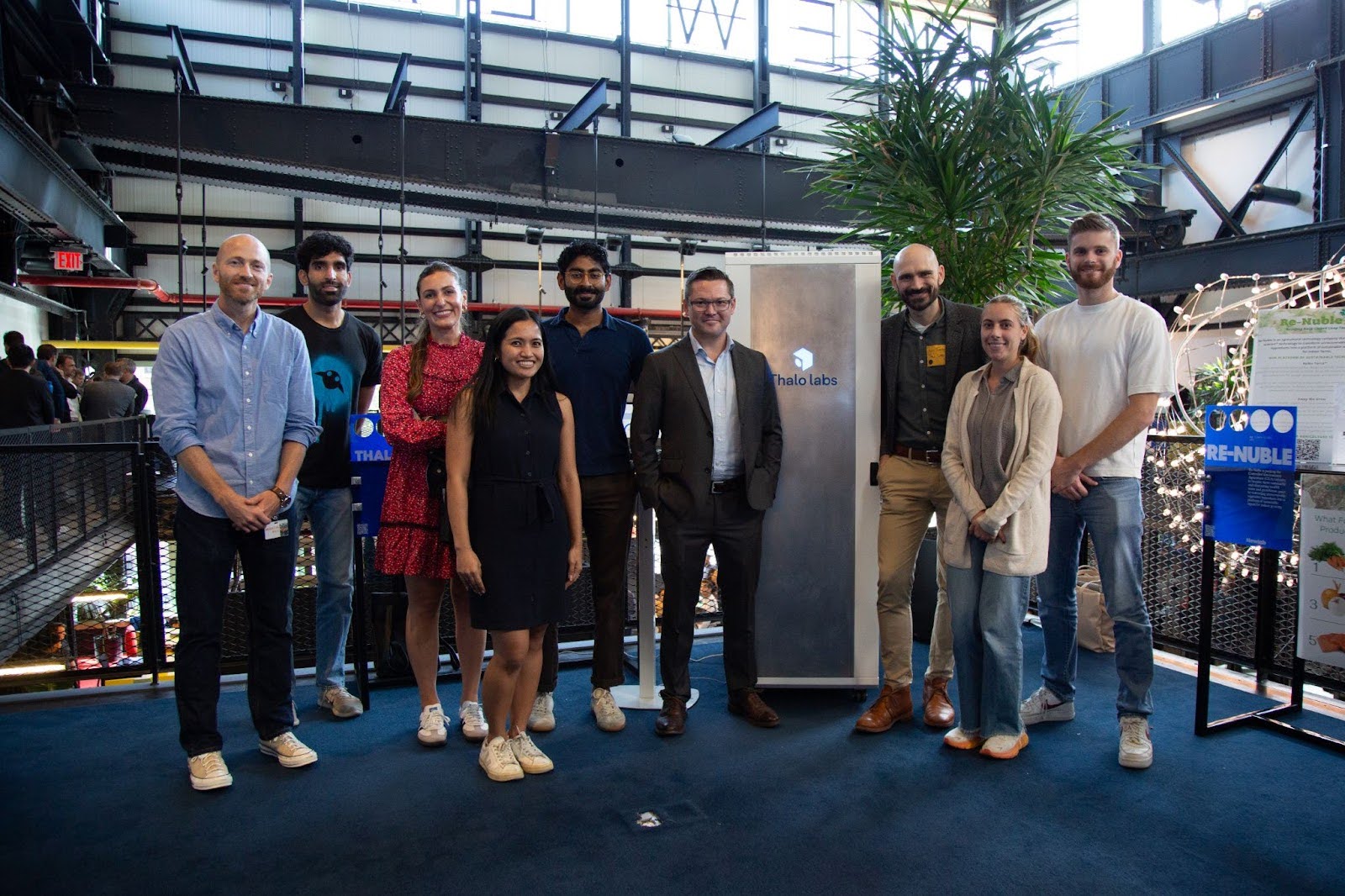Thalo Labs: bringing aerospace-grade engineering to the built environment
Commercial, residential, and industrial buildings are the second largest contributor of global CO2 emissions. New city regulations, like NYC’s Local Law 97, are designed to penalize structures that exceed certain thresholds, but building owners are often dealing with old, faulty equipment, unknowingly exceeding emissions targets with little way to ensure compliance.
Enter Thalo Labs. Based in NYC’s Brooklyn Navy Yard, Thalo’s proprietary sensors and software suite are a turnkey solution for buildings to reduce operating expenses, boost occupant comfort, slash greenhouse gas emissions, and maximize a building’s full potential. The team recently launched a novel product suite – Thalo Copilot – which expands the critical systems they can monitor and optimize. We recently sat down with Brendan Hermalyn (CEO) and Nina Nappa (Chief of Staff) to learn more about Thalo’s growth story.
What are the key bottlenecks to decarbonization of the built environment? How is Thalo Labs working to address this?
Operational emissions in buildings basically come from three sources:
- Onsite combustion of petrochemicals for heating and cooling systems
- Emissions from electricity production for refrigerant-based assets (i.e. heat pumps, air conditioner split units)
- Onsite leakage of greenhouse gasses like methane or refrigerant
Over 30% of commercial electricity energy is wasted due to HVAC inefficiencies, 70% of combustion assets suffer from natural gas leaks, and 50% of refrigerant-based assets are undercharged or leaking – an often silent drain on resources that proactive monitoring can address.
Another bottleneck is the lack of real-time data on HVAC performance. Most buildings are equipped with technology less advanced than the Apple Watch you wear on your wrist. Without this real-time visibility, HVAC systems often get attention only when problems escalate into emergencies, costing onsite teams time, money, and more emissions.
Thalo has made it easy and cost effective to deploy NASA-grade sensing and analytics to every building. By leveraging technology advancements in affordable photonics, advanced on-device processing, and cloud connectivity, we’re making real-time, data-enabled building management accessible for the first time. Thalo’s physics-based models arm facilities teams with actionable insights to optimize performance, reduce costs, and tackle emissions, without requiring costly retrofits. These insights empower building teams to shift from reactive fixes to proactive maintenance, setting a new standard for energy efficiency and sustainability in the built environment.
How have you demonstrated the value of Thalo’s technology? Where might we have seen your deployments?
In just over 3 years, Thalo Labs has evolved from pilot-scale demonstration projects to large-scale deployments across nine states. Beyond improving operations and saving our customers money, we’re incredibly proud that our deployments have already mitigated over 80,000 tons of CO₂ equivalent – and we’re just getting started.
We’ve partnered with one of the world’s top commercial real estate management firms to deliver efficiency improvements to their clients, a Fortune 50 bank where pilot projects have since expanded to a 20-site deployment, and industry leaders like ESRT at Empire State Building, where we’ve deployed our technology in what we believe is the largest direct air capture facility in the Northeast. Partnerships like these validate the power and scalability of our technology and underscore our commitment to helping clients leverage cutting edge technology to achieve ambitious sustainability goals.
Using data collected from our first large tranche of combustion analysis systems, we developed an ROI model focused on energy savings and operational efficiency, allowing us to talk directly about payback periods. This approach has proven to be much “stickier” with customers, providing a compelling case for the financial benefits of our technology alongside its sustainability impact.
What are you looking to unlock with Copilot? How have you managed to demonstrate early ROI with your novel approach?
With Thalo’s Copilot platform, we’re unlocking new ways to help building operators and engineers save money, prevent downtime, and move from reactive to preventive maintenance. We started with combustion equipment like boilers and cogeneration, and expanded the platform to cover refrigerant-based equipment like traditional A/Cs and heat pumps. This unlocks new geographies, like the southeast and southwest, and also means Thalo can now help with over 80% of the HVAC equipment installed in buildings today.
Copilot empowers building operators with real-time insights that pinpoint inefficiencies like refrigerant leaks and short cycling, which can increase both emissions and operational costs. As regulatory bodies like the EPA continue to focus on leak repair and automatic leak detection for refrigerants, the ability to take action proactively will be even more important.
The sustainable buildings of the future will be connected in real time to the people who operate and work with them. With Copilot, we’re providing customers with a solution that not only meets environmental regulatory standards, but also drives year-round operational savings. By offering real-time, actionable insights, Copilot positions our customers to achieve fast payback periods, helping them meet both financial and environmental goals.
